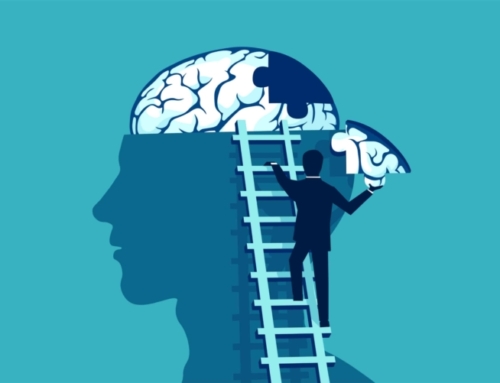As clinicians, we meet hundreds or thousands of patients every year. What they all have in common, it is safe to assume, is they are hurting. I’ve not yet had someone see me professionally to ensure their continued “optimal performance and well-being.”
Today, I focus on how to “be” with someone in their hurt to help them heal. First, here are some ways of experiencing hurt.
- Invalidated: Marsha Linehan states a person can have their internal experiences invalidated “by erratic, inappropriate, and extreme responses” from those around them. Since we are social creatures, we not only need a secure attachment to thrive but, even more foundationally during early childhood, we need to ensure our internal experiences correspond to events in the world, to make the world comprehensible and predictable. If sometimes a behavior elicits no demonstrable response and at other times harsh punishment, a child cannot form a coherent understanding of the world’s expectations. Since a child usually knows no other world, they question themselves rather than the world, which seems vast, immovable, and insurmountable. Invalidation, thus, need not entail abuse or trauma. Bizarre and inconsistent responses are disorienting enough to interfere with forming a view of a world through which one can move without continual fear of injury, punishment, abuse, or abandonment.
- Betrayed: Often, when a person is hurt by someone they depend on for care, a secondary hurt arises, the hurt of betrayal. The hurt of betrayal arises at the moment the victimized person realizes that a moral duty to be protected, such as by a parent or other caretaker, was violated. Even small children can be aware of the gap between an assumed promise and its breaking, and feel betrayed. Sometimes, however, the import of the betrayal only comes into full understanding years later. The hurt of betrayal is the reason that abuse by a trusted caretaker is often more traumatizing than abuse by a stranger.
- Grieving: Grief is ubiquitous. It arises not only when we lose someone close or lose some capacity, such as no longer being able to ski due to injury or to play a musical instrument due to rheumatoid arthritis. Grief also arises from awareness of what might have been but wasn’t and can no longer be. For example, for persons who grew up in abusive households, grief may lay on top of posttraumatic symptoms, betrayal, and shame. That person was robbed of being loved and protected. The same is true for the traumatized soldier or victim of sexual assault. They’ve been robbed of a life without that trauma. Life will never be the same, even if every one of the posttraumatic symptoms is successfully treated.
- Alienated: Whether related to loss or trauma or neither, many persons at some point in life experience a questioning or loss of their life values, goals, faith, or other touchstones that previously guided them. This sense of being unmoored may be poorly articulated and may become manifest through reckless and impulsive behaviors, or withdrawal and listlessness.
What all these hurts have in common is they strike at the core of a person’s existence and their place in the world. These hurts cannot be resolved with a pill or not only with a pill.
What is to be done? This brings me to the next section.
Discomfort in the Presence of Hurt
The clinician facing a person in pain can help them by, first, NOT doing something that is a common initial impulse, and that is to try to fix the hurt, to prescribe an intervention. This impulse arises because as clinicians we are trained and expect ourselves to fix problems. This is admirable and I’d rather have a problem-solving clinician treating me than one without a clear plan for resolution. However, some “problems,” such as healing from hurt, require a different approach.
This impulse to fix hurt also arises because being with someone who is hurting is uncomfortable – in two ways. First, it nudges us towards similar thoughts, thoughts we may not wish to confront in ourselves. We may realize we are also hurting, questioning, and unmoored. Second, we don’t know how to react. Most of us haven’t been taught, and we squirm from our helplessness.
Thus, a natural and common reaction is to run from the discomfort of observing someone’s pain and our helplessness. We can’t literally run away or dismiss the patient, of course, but we can run away from “the hurt in the room.” We can redirect the conversation to, “We should consider increasing your medication dose.” Or to “What else is going on?”
Resting and Dwelling in Hurt
So, how else can a clinician respond to hurt? First, listen for it. I promise you that once you start listening you will hear it several times a day. If you miss a patient’s communications related to their hurt, don’t worry; they will bring it up again and again. They are crying out to be heard, to move beyond the talk of symptoms, beyond the transactional relationship. They want to be a person seeking to heal from hurt and not an object to be worked upon.
When you hear hurt, pause. Stop talking. Stop looking like you’re about to start talking again. Just stop. Rest. The space of silence will draw out the patient to say more. Maybe. Maybe not. Maybe you didn’t give them enough time or enough indication you are truly interested. Or maybe they are not ready yet. No matter; you communicated you are ready to hear the hurt. Sooner or later it will come.
Sometimes you can communicate YOU are ready to hear the hurt through words and sometimes through actions. A change in your posture, a difference in the way you look at the patient, the fact you look up from your screen, or you put your pen and paper down. It’s easy to communicate stillness. Try it now.
I have learned to use words sparingly, and always only after communicating non-verbally my intent to hear and rest with the patient in their hurt. Often a simple, “Would you like to say more” is enough at the start.
Once you establish this new way of being with your patient, open to hearing their hurt, you and the patient will find a way forward together. You may speak about it more or less frequently, to a lesser or greater extent, using more or fewer words. Let the patient set the pace at the beginning. Once you’re into this mode of being together, you can feel your way forward on how much prompting the patient needs or desires from you.
I include the word “dwelling” in the title of this section. Dwelling is a term used by Robert Stolorow (an existential psychoanalyst) and borrowed from Heidegger, to describe an even deeper form of resting in another person’s hurt. Let “dwelling” remain the next step, as you’ll see why with this quote: “In dwelling, one does not merely seek to understand the other’s emotional pain from the other’s perspective. One does that, but much more. In dwelling, one leans into the other’s emotional pain and participates in it, perhaps with aid of one’s own analogous experiences of pain.”
Cautions
- You usually should not actively encourage a patient to dwell in their pain, especially at the beginning. You are not the decider on when the patient should face their hurt and to what degree. You don’t know enough about the hurt to know if dwelling in pain at this moment is helpful to the person. If you misjudge, the patient may hold it against you for causing them more pain. Further, the patient may feel you “manipulated” them into exposing their pain and vulnerability to you before they were ready to do so. In hindsight, they may judge they went too far and blame you for it. Instead, listen for their cues and allow them to follow up through your non-verbal and tentative verbal cues of openness. If your cues are ignored, move on.
- Saying “I understand” may backfire because the patient may believe you are in no position to truly understand.
- Giving examples from your own life to demonstrate you understand may also backfire because it may be experienced as distracting from the patient’s focus on and struggle to communicate their hurt. And, besides, experiencing pain isn’t a competition. The patient may much prefer to rest with you in THEIR sorrow.
- Patients accessing hurt do not usually want to be reassured. They do not want to hear platitudes, such as, “It will get better with time.” Rather, they want to feel less alone, less broken, and more connected through a non-judgmental acceptance. They want someone who can appreciate their pain, that is, who can understand the breadth, depth, and consequences of it. This appreciation is best achieved through a willingness (that the patient can perceive) to listen, not rush, and not divert away from the discomfort.
- We are often rushed at work. All this “resting” may seem like a luxury you cannot afford. I have found, however, that to address a patient’s hurt does not require a lot of time. Patients aren’t looking to dwell in pain for too long. They simply want to experience they are with someone who is interested in their pain and is safe to expose their hurt and vulnerability to. Remember also that patients are engaged in their own gradual exposure, growing more accepting of and comfortable with their hurt. They are coming to terms, able to close the chapter without fear that it can explode open on them at any point, triggered by unexpected circumstances. I have found that addressing the hurt often saves time because patients finally no longer need to keep circling it with what seems like repetitive (because unacknowledged) stories and concerns.
Until next time,
Dr. Jack
LanguageBrief
“Of course I’ll hurt you. Of course you’ll hurt me. Of course we will hurt each other. But this is the very condition of existence. To become spring, means accepting the risk of winter. To become presence, means accepting the risk of absence.” – Antoine de Saint-Exupery
“later that night
i held an atlas in my lap
ran my fingers across the
whole world
and whispered
where does it hurt?it answered
everywhere
everywhere
everywhere.”
Warsan Shire“In a perverse way, I was glad for the stitches, glad it would show, that there would be scars. What was the point in just being hurt on the inside? It should bloody well show.”
Janet Fitch







Leave A Comment